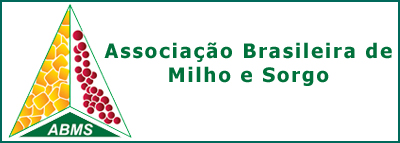PRODUTIVIDADE DE SORGO SACARINO EM FUNÇÃO DE POPULAÇÕES DE PLANTAS E DE ÉPOCAS DE CORTE
DOI:
https://doi.org/10.18512/1980-6477/rbms.v15n1p105-113Keywords:
sorghum bicolor, brix,Abstract
RESUMO – Este trabalho objetivou avaliar o efeito da população de plantas e época de corte sobre a produção de sorgo sacarino. O experimento foi instalado em novembro de 2012, em Lavras–MG. O delineamento experimental foi o de blocos casualizados, com 3 repetições, em esquema fatorial 4x4 (4 populações: 70, 100, 130 e 160 mil plantas ha-1; 4 épocas de corte: 0 dias após o florescimento (DAF), 10 DAF, 20 DAF e maturidade fisiológica aos 40 DAF. A partir da análise do caldo sacarino da cultivar BRS 506, foram avaliadas as características industriais: volume de caldo (VC), sólidos solúveis totais (ºbrix), açúcares redutores totais (ART) e toneladas de brix por hectare (TBH). O aumento das populações propicia o maior VC e não afetou as demais variáveis. As características industriais são influenciadas pelas épocas de corte. O brix e a ART apresentaram crescimento linear com o aumento do período após o florescimento para o corte de plantas. A maior produtividade (VC e TBH) foi obtida próxima aos 17 e 14 DAF, respectivamente, favorecendo maior produção de etanol nesses estádios.
Palavras-chaves: sorghum bicolor, brix, biocombustível.
EFFECT OF PLANT POPULATION AND HARVEST TIME ON SORGHUM SACCHARINE YIELD
ABSTRACT- The present work aimed to evaluate the sorghum saccharine cultivar BRS 506 regarding industrial characteristics related to yield and production of ethanol related to plant population and harvest time. The experiment was carried out in November 2012, in Lavras – MG. A randomized blocks experimental design was used, with three replications, in a 4x4 factorial scheme [4 populations: 70, 100, 130 and 160 thousands plants per hectare; 4 cutting seasons according to flowering: 0 days after flowering (DAF), 10 DAF, 20 DAF and physiological maturity 40 DAF]. Industrial characteristics such as juice volume (JV), total soluble solid (0brix), total reducing sugars (TRS) and tones of brix per hectare (TBH) were evaluated after the analysis of saccharine juice of the BRS 506. Increased population provided higher JV. The industrial characteristics were affected by the period of cutting. The cutting at 40 DAF provided the highest 0brix and TRS. JV and TBH reached the highest values at 17 and 14 DAF, respectively, periods showing the highest production of ethanol.
Key words: Sorghum bicolor, production of ethanol, brix, biofuel.
Downloads
Published
How to Cite
Issue
Section
License
Authors retain copyright and grant the journal right of first publication with the work simultaneously licensed under the Creative Commons Attribution License that allows the sharing of work and recognition of the work of authorship and initial publication in this journal.
Authors are able to take on additional contracts separately for non-exclusive distribution of the version of the paper published in this journal (eg, in an institutional repository or publish as a book), with acknowledgment of its initial publication in this journal.
Authors are permitted and encouraged to post their work online (eg, in institutional repositories or on their website) at any point before or during the editorial process, as this may leadto productive exchanges, as well as increase the impact and citation of published work.



